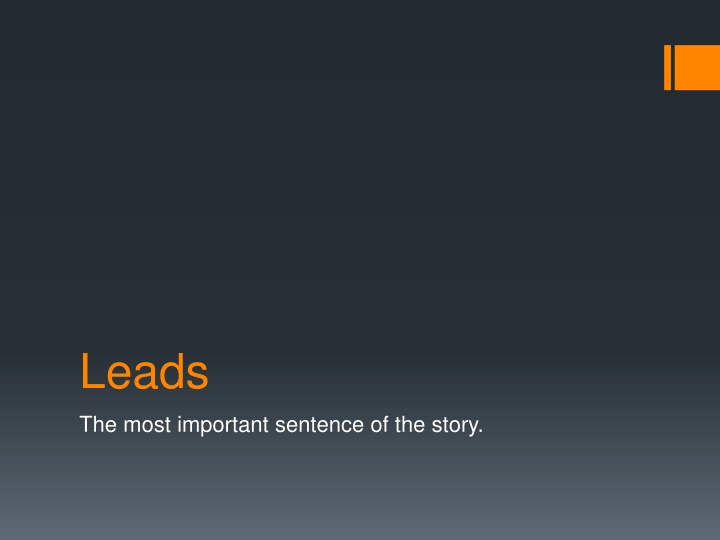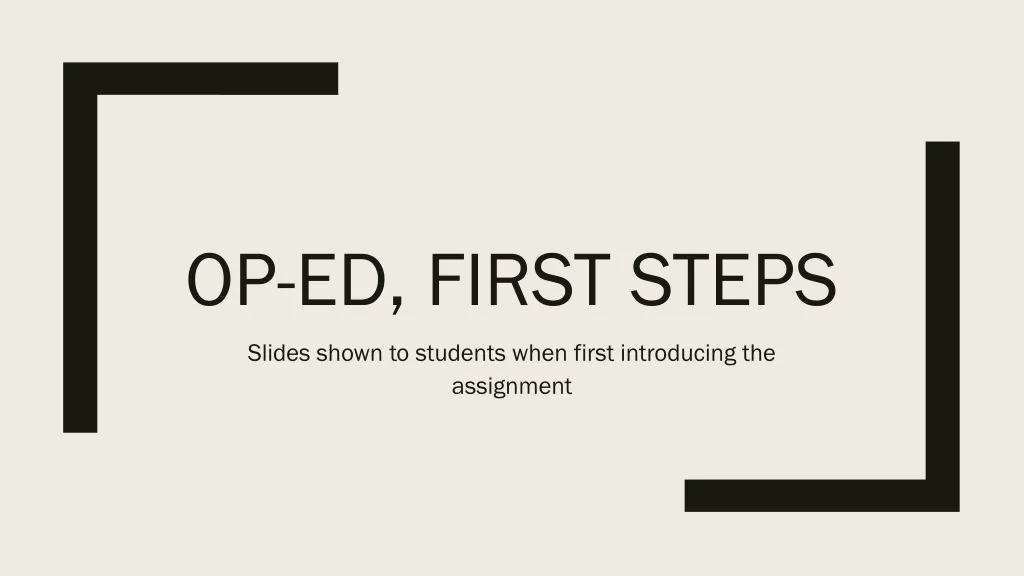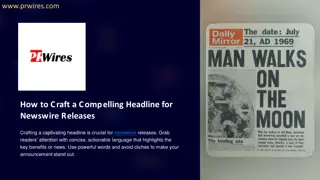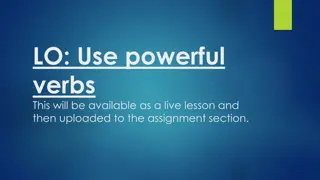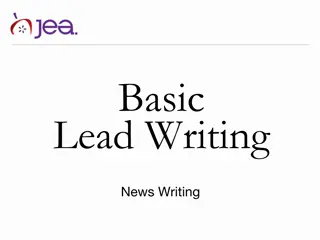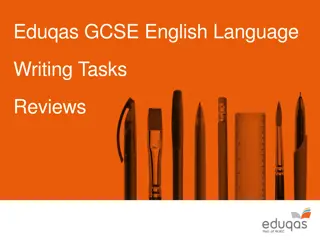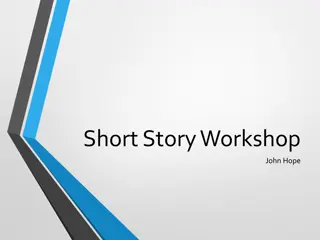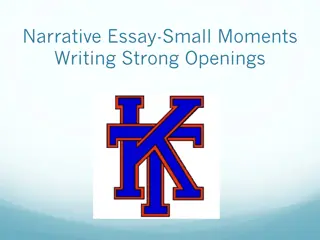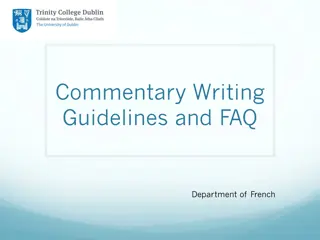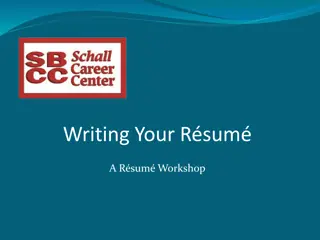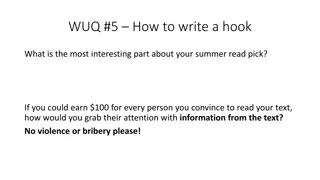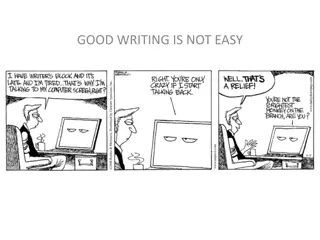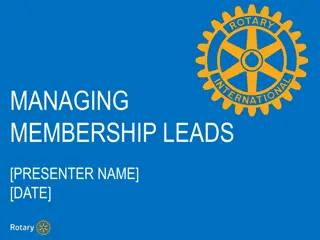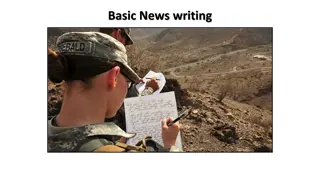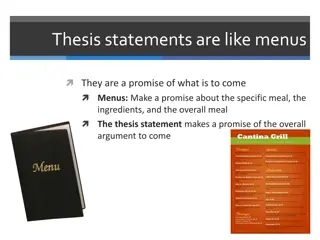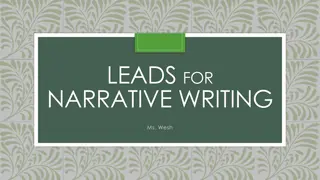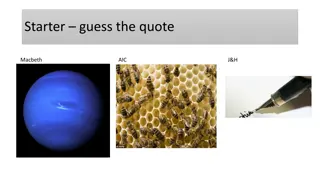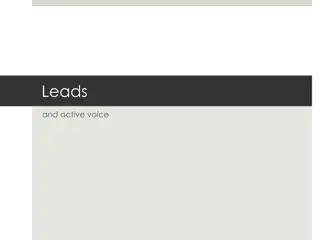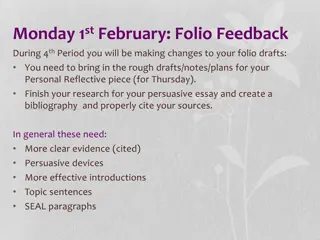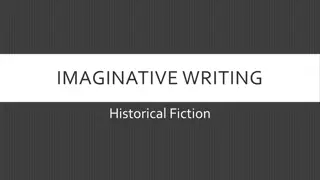Crafting Compelling Leads in Writing: The Art of Snagging Readers
Attracting readers is a skillful craft in writing. The key lies in creating compelling leads that hook readers from the start. Learn the importance of snagging readers, the art of building a lead, and techniques such as humor and curiosity to captivate your audience effectively.
Download Presentation

Please find below an Image/Link to download the presentation.
The content on the website is provided AS IS for your information and personal use only. It may not be sold, licensed, or shared on other websites without obtaining consent from the author.If you encounter any issues during the download, it is possible that the publisher has removed the file from their server.
You are allowed to download the files provided on this website for personal or commercial use, subject to the condition that they are used lawfully. All files are the property of their respective owners.
The content on the website is provided AS IS for your information and personal use only. It may not be sold, licensed, or shared on other websites without obtaining consent from the author.
E N D
Presentation Transcript
Leads The most important sentence of the story.
Attracting readers Readers enter a sea of text from a boatload of sources. Books, magazines, newsletters, newspapers and notes. Websites, social media, texts. Billboards, flyers, store promotions and junk mail.
Why read your story? That s the question we need to ask when we write. Why should a reader take precious moments to read what we write? The answer, of course, is no reason at all. Unless we make it compelling enough, and we do that, as writers, through the lead ( lede in journalism jargon, perhaps so we don t think it s pronounced like the carbon in a pencil?). I like to call it snagging them and dragging them.
Snagging and dragging If you want Ross s extended discussion of snagging and dragging, check out the free online textbook, Chapter 5. (www.weirdwaysofnews.com)
Length How long should a lead be? Short, probably. It should compel readers to the second sentence, and the second sentence, to the third. But the lead in some narrative stories may take more than just one sentence to weave. It may be a paragraph, called the nut graf sometimes in journalism jargon.
Length Some leads need to snag quickly, and that s what we usually are trying to do in mass media style. But in narrative, story-telling style, sometimes they smolder for a few lines, piquing curiosity and enticing readers instead of hitting them right off the top.
Snagging In any case, you can t expect a reader to be very patient. Writers may try several familiar techniques to snare readers: Humor Surprise Irony Novelty Curiosity
Building the lead In a story of some length, writers try to build a lead so that the reader is drawn further and further into the story. Each sentence, particularly at the beginning, needs to build toward that goal. Particularly consider the last sentence of the paragraph make it a springboard to the next. Try humor if you re good at that sort of thing.
Leads that snag and drag William Zinsser wrote a classic book, On Writing Well, that takes seriously the idea of leads. Here are a few of his own: I ve often wondered what goes into a hot dog. Now I know and I wish I didn t. Presumably few of us would not be compelled to go on to the second graf (paragraph) after a lead like that.
Sample leads Here s the second graf: My trouble began when the Department of Agriculture published the hot dog s ingredients everything that may legally qualify because it was asked by the poultry industry to relax the conditions under which the ingredients might also include chicken. In other words, can a chicken-furter find happiness in the land of the frank?
Sample leads Zinsser notes that his longer sentence explains the incident, but then he adds what he calls a snapper to restore the easy-going tone. We also note he uses a supposedly forbidden passive voice: because it was asked by the poultry industry to relax the conditions Question: Why did he not write in the active voice, because the poultry industry asked it to relax the conditions .
Sample leads Here s the next graf: Judging by the 1,066 mainly hostile answers that the department got when it sent out a questionnaire on this point, the very thought is unthinkable. The public mood was most felicitously caught by the woman who replied: I don t eat feather meat of no kind. Funny quote at the end. Say something funny and a reader will probably at least continue a little longer. As Zinsser noted, when you find a funny quote, find a way to use it.
Sample leads Whatever you think about hot dogs, I m pretty sure you re going to want to read more of that story.
Surprise and novelty Here s a lead from the Star-Tribune (Minneapolis-St. Paul): As a Minnesota fisherman, Daniel VanVickle is on the verge of sudden fame and notoriety. He is also 31/2 years old. (Ron Schara)
Surprise and irony Most of us would probably read on. The story is about a kid who caught a state record fish. Irony is also surprising, melding two seemingly dissimilar concepts: It seems bizarre and remote, John Sexton s story of death and pain, as his Thunderbird races in brilliant sunlight down the concrete highways that seem both soul and sinew of Detroit. (Myra MacPherson)
Surprise and irony Would you want to read on? I ll bet you would. It s a story about a former POW and his challenges of dealing with life in the States.
Snagged Once a writer can be fairly confident that the lead has done its work, the rest is not quite as difficult. If you re casting about for leads, often the answer is in some odd fact or interesting detail likely to attract attention. In researching and interviewing for a story, observe details. Look for the unusual that may set the tone of the story. As you sift through your notes a detail sometimes steps out and begs for promotion to the beginning.
Details as leads Here s a lead that suggests the writer observed details: Fresh young faces, flushed with cold and excitement. Flaring miniskirts, flashing, slender legs, splayed in the air in symmetrical formation. Shouts and yells, screeched to the crowd in forceful unisons, answered by thunderous roars. It s the cheerleaders, doing their stuff for the big game, the culmination of the season, the ultimate prize. (Alan M. Kriegsman)
Details A story about high school cheerleaders would seem to be fairly mundane, but most people who read that lead would go onto the second graf, at the least. Or how about this: Parris Island, N.C. He is seething, he is rabid, he is wound up tight as a golf ball, with more adrenalin surging through his hypothalamus than a cornered slum rat, he is everything these marine recruits with their heads shaved to dirty nubs have ever feared or even hoped a drill instructor might be. (Henry Allen) Are you going to be reading the next graf? I m betting you are.
Quirks Zinsser suggests writers can find ideas for leads from the interviews and obvious sources. But he says to go farther: Look at signs and billboards and at all the junk written along the American roadside. Read the labels on our packages and the instructions on our toys, the claims on our medicines and the graffiti on our walls. Read the fillers, so rich in self-esteem, that come spilling out of your monthly statement form the electric company and the telephone company and the bank. Read menus and catalogues and second- class mail .Our daily landscape is thick with absurd messages and portents. Notice them. They not only have a certain social significance; they are often just quirky enough to make a lead that is different form everybody else s.
Leads to avoid You probably know some of the clich s in lead-land, but just as a reminder: Avoid question leads. Don t ask; tell. Avoid the future clich : When a future archeologist comes across Avoid the spaceship clich : If a space being landed what would he think . Avoid quote leads, unless the quote is short and compelling. Begin with your own words.
